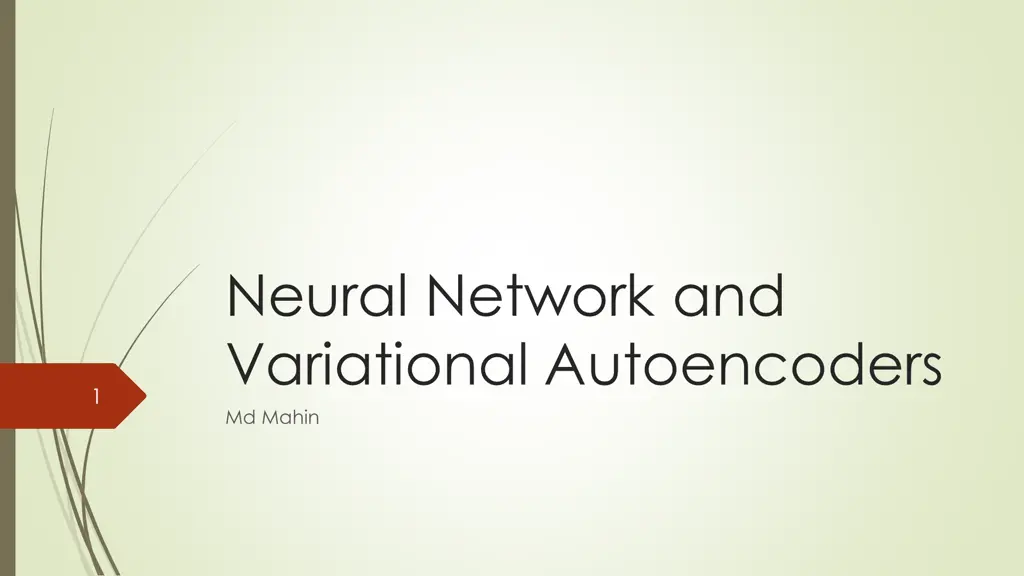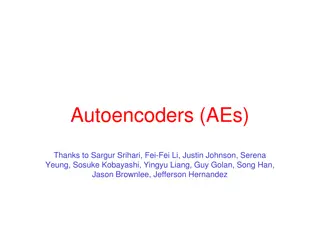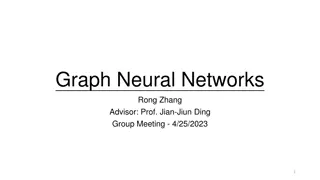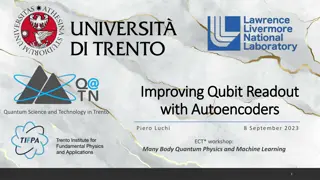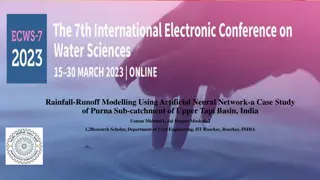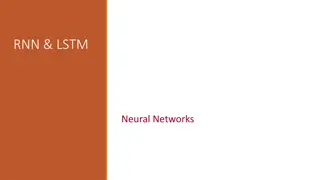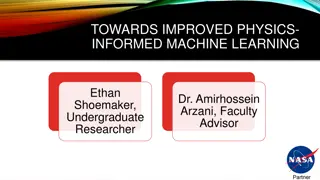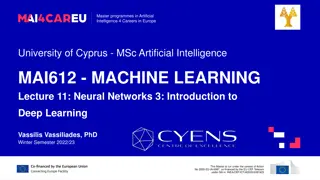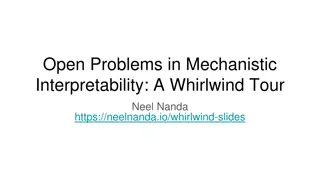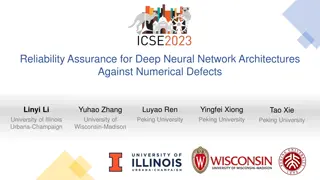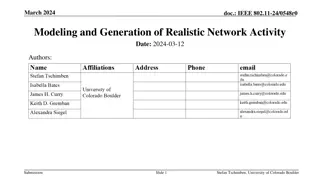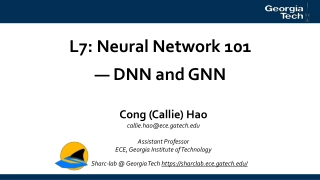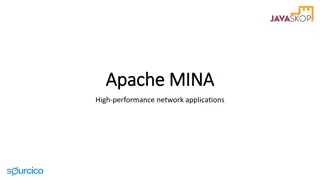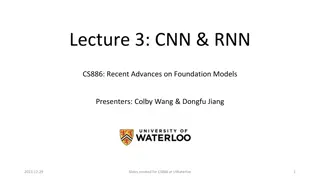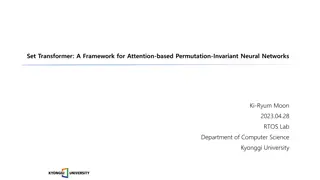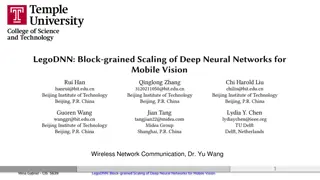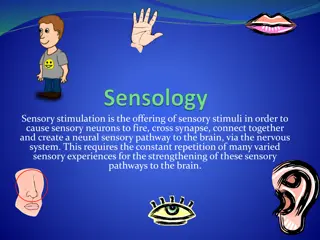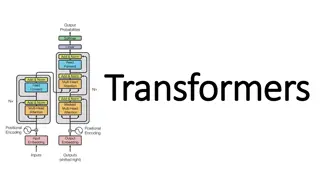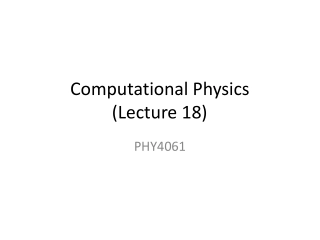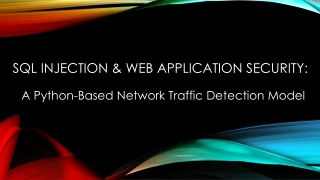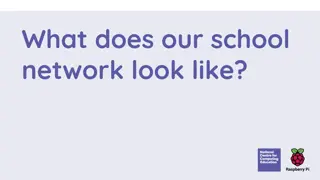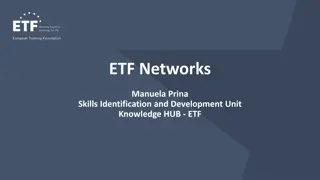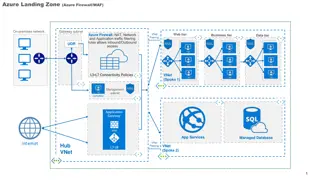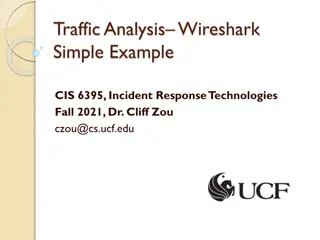Neural Network and Variational Autoencoders
The concepts of neural networks and variational autoencoders. Understand decision-making, knowledge representation, simplification using equations, activation functions, and the limitations of a single perceptron.
- Neural network
- Variational autoencoders
- Decision-making
- Knowledge representation
- Simplification
- Activation function
- Perceptron
- Hidden layers
Download Presentation

Please find below an Image/Link to download the presentation.
The content on the website is provided AS IS for your information and personal use only. It may not be sold, licensed, or shared on other websites without obtaining consent from the author. Download presentation by click this link. If you encounter any issues during the download, it is possible that the publisher has removed the file from their server.
E N D
Presentation Transcript
Neural Network and Variational Autoencoders Md Mahin 1
2 Neural Networks
Decisions and Knowledge 3 Knowledge Decisions Say you want to decide whether you are going to attend a festival this upcoming weekend. There are three variables that go into your decision 1. X1= Is the weather good? [0=bad,1=good] 2. X2= Does your friend want to go with you? [0=no,1=yes] 3. X3= Is it near public transportation? [0=no,1=yes] Your Decisions Might be like this: x1 x2 0 0 0 0 0 1 0 1 1 0 1 0 1 1 1 1 x3 0 1 0 1 0 1 0 1 Y No No No No Yes Yes Yes Yes Reference: Introduction to Neural Networks, Taylor B. Arnold, Yale Statistics
Visual Represntation 4 1 Decision Boundary/ Hyperplane x1 1 0 x2 x3 1
How to Simplify It 5 Using Equations: Y= 0, (x1*w1+ x2*w2+ x3*w3)+b< threshold Y= 1, (x1*w1+ x2*w2+ x3*w3)+b>= threshold If we replace individual variables using vectors, s.t. X=[x1,x2,x3], W=[w1,w2,w3], B=[b1,b2,b3][B is bias, that shift the plane towards origin] Y= 0, XW+B< 0 Y= 1, XW+B>= 0 The same hyperplane is applied to logistic regression
What is a Neuron 6 How it works Perceptron
How the Activation Function Works (An Example with Sigmoid Function) 7 Normal activation function will just through 0 or 1. If value does not cross a threshold it will through 0 else 1. When we use Sigmoid function. For a particularly positive or negative value of x . w + b, the result will be nearly the same as with the perceptron (i.e., near 0 or 1). For values close to the boundary of the separating hyperplane, values near 0.5 will be emitted. Many more activation functions available, that you can use based on your need. hyperbolic tan, rectified linear unit, leaky rectified linear unit, maxout
Neural Network 8 Problem with single perceptron is, if you have very high dimensional data, it will not work. For example you have 784 variables (pixels) from image. Your hyperplane need to be very complex In such cases you have to use networks of perceptron's or neurons
A network of perceptrons 9 Neural Network What is Happening If you see individual neural level: They become active or deactivate based on inputs When we see at layer level: A layer is allowing a group of features In this particular example our hidden layers are actually separating features. As a result, 2ndlayer sees less feature than input layer, and 3rd layer sees less feature than 2ndlayer, and output layer only get features that will help it to make a very simple decision
How they learn 10 Cost Function/ Loss Function Basically we train a network During the training process, we give it a input x and let it generate an output y~. We know the real output y. Using that we calculate the error or loss, and back- propagate it to every neuron, use gradient descent to adjust there weights so we make less error next time A search algorithm
Functions 11 Gradient Descent Cost Functions
Question Can you relate how the search algorithms you learnt so far work here? 12
Why Neural Networks 13 Consider the MNIST digit dataset, you need a very complex model to learn different characters hyperplane. Due to complex nature, automatic feature selection capability from loss, Neural Network is very good at this Other classifiers can also do these, but you may need to do a lot of feature engineering [In NN hidden layers doing that automatically] Simplified Representation in 2D
Autoencoders 14
Autoencoders 15 An autoencoder is a feed-forward neural net whose job it is to take an input x and reconstruct x. To make this non-trivial, we need to add a bottleneck layer whose dimension is much smaller than the input. Basically, what is happening here, we are reducing 784 dimension input to only 20 dimension. We are compressing features, only trying to keep important ones Next we are trying to reproduce that using only those important ones
Real Life Similarity 16 You take a picture (3D-> 2D) Create a 3D print from the 2D plot
How Autoencoders Works 17 x: Input vector or array ?: Output vector or array V: A matrix of weights. For example if D has 3 neurons, K has 2 neuron, for every connection there will be a weight and it is a 3 * 2 weight matrix U: Another matrix of weights. For example if D has 3 neurons, K has 2 neuron, for every connection there will be a weight and it is a 2 * 3 weight matrix
How it works 18 Vx: A matrix multiplication project D dimensional x to k dimensional plane. Shown for 3 to 2. Dimensionality Reduction Ux : Project k dimensional hidden unit to D dimensional ? Overall Output is: ? = U?x [A linear function] How it learn: Learn the U, V matrix or all weights so that we get minimum loss L(x, ?) = | ? ? |2 We minimize L to learn U,V
Why Autoencoders? 19 Map high-dimensional data to two dimensions for visualization Compression Learn abstract features in an unsupervised way so you can apply them to a supervised task Unlabled data can be much more plentiful than labeled data Learn a semantically meaningful representation where you can, e.g., interpolate between different images.
Some limitations of autoencoders 20 They re not generative models, so they don t define a distribution How to choose the latent dimension?
Generative Models 21 One of the goals of unsupervised learning is to learn representations of images, sentences, etc. A generative model is a function of representation z. X= G(z) [G is the generator function] Example: VAE, GAN
How Learning Distribution Help 22 VAE Normal AE
Example 23 You reduced 784 pixel character images to 20 dimension using a normal autoencoder and a VAE Normal encoder part is giving you a 20 dimensional mean value (or just the cluster center). So when decoder will reproduce, it will be some sample near that mean But, in VAE it is giving you a variance also. So, basically now you can generate some sample you did not even see (due to variance), but will also be similar to an image cluster Example from 2D cluster at page 12
How VAE Learn Distribution 24 VAE based on variational inference Decoder does is calculate p(z|x)= p(x,z)/p(x) What generator part does is: ?(?) = ? ? ? ? ? ?? A noisy observation model is learnt ?(?|?) = ?(?;??? , ?) ? is and learnt by the decoder
How VAE Learn Distribution(Not Covered) 25 Direct computation of p(x) is costly It introduce a further function to approximate the posterior distribution as ? (?|?) ??(?|?) Approximate q(z) which is known to p(z|x) the idea is to jointly optimize the generative model parameters ? to reduce the reconstruction error between the input and the output and to make ? (?|?) as close as ??? ? Min ???(? (.|?)||??(.|?)) It uses KL divergence to make the parameters similar and define new loss function using ELBO method that does both task at the same time ??, ? = log??? ???(? (.|?)||??(.|?))
Reparameterization Trick(Not Covered) 26 Back propagation won t work on random node z (if we think it as just distribution) So z is made into two deterministic node for mean and std and random part separated as Gaussian error
Class Conditional VAE(Not Covered) 27 A class-conditional VAE provides the labels to both the encoder and the decoder. Since the latent code z no longer has to model the image category, it can focus on modeling the stylistic features
References 28 Variational Autoencoder Lacture by Roger Grosse and Jimmy Ba [CSC421/2516 Lecture 17: Variational Autoencoders ] Variational Autoencoder Wikipedia: CSC421/2516 Lecture 17: Variational Autoencoders Ali Ghodsi, Lec : Deep Learning, Variational Autoencoder [https://www.youtube.com/watch?v=uaaqyVS9-rM]
